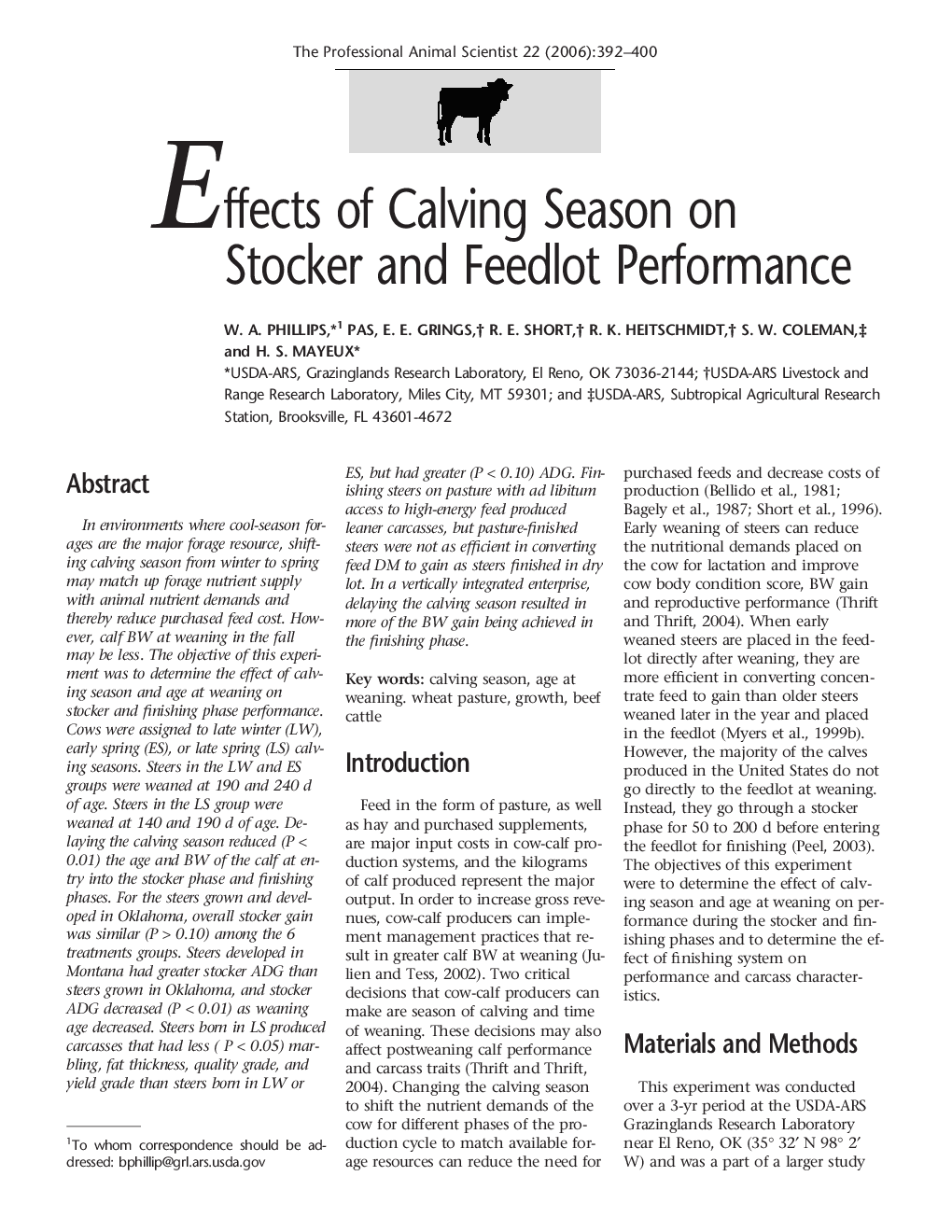| Article ID | Journal | Published Year | Pages | File Type |
|---|---|---|---|---|
| 2454580 | The Professional Animal Scientist | 2006 | 9 Pages |
Abstract
In environments where cool-season forages are the major forage resource, shifting calving season from winter to spring may match up forage nutrient supply with animal nutrient demands and thereby reduce purchased feed cost. However, calf BW at weaning in the fall may be less. The objective of this experiment was to determine the effect of calving season and age at weaning on stocker and finishing phase performance. Cows were assigned to late winter (LW), early spring (ES), or late spring (LS) calving seasons. Steers in the LW and ES groups were weaned at 190 and 240 d of age. Steers in the LS group were weaned at 140 and 190 d of age. Delaying the calving season reduced (P < 0.01) the age and BW of the calf at entry into the stocker phase and finishing phases. For the steers grown and developed in Oklahoma, overall stocker gain was similar (P > 0.10) among the 6 treatments groups. Steers developed in Montana had greater stocker ADG than steers grown in Oklahoma, and stocker ADG decreased (P < 0.01) as weaning age decreased. Steers born in LS produced carcasses that had less ( P < 0.05) marbling, fat thickness, quality grade, and yield grade than steers born in LW or ES, but had greater (P < 0.10) ADG. Finishing steers on pasture with ad libitum access to high-energy feed produced leaner carcasses, but pasture-finished steers were not as efficient in converting feed DM to gain as steers finished in dry lot. In a vertically integrated enterprise, delaying the calving season resulted in more of the BW gain being achieved in the finishing phase.
Related Topics
Life Sciences
Agricultural and Biological Sciences
Animal Science and Zoology
Authors
W.A. PAS, E.E. Grings, R.E. Short, R.K. Heitschmidt, S.W. Coleman, H. Mayeux,
